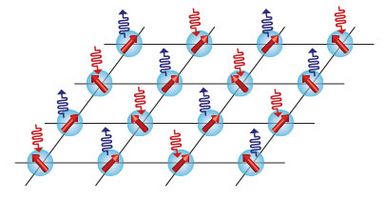Nonequilibrium phase transitions and transport in driven-dissipative systems

While the theory of phase transitions in ground and equilibrium states of condensed matter systems is well established, comparably little is still known about the critical behavior of driven-dissipative many-body systems out of equilibrium. Such conditions occur for example, in interacting quantum optical systems or superconducting circuits, which are naturally subject to decay while being externally driven by lasers or microwave fields. Many-body problems out of equilibrium are essentially impossible to simulate with conventional numerical methods and new efficient analytic and numerical approximation methods are required to treat such problems. Beyond the development of such methods, we are also interested in new physical phenomena that arises in open quantum systems, ranging from quantum PT-symmetry breaking to non-equilibrium phase transitions in microscopic power grids.
People: Louis Garbe, Yvan Briard
Selected publications:
-
The bosonic skin effect: boundary condensation in asymmetric transport, L. Garbe, Y. Minoguchi, J. Huber, and P. Rabl, arXiv:2301.11339.
-
Realistic simulations of spin squeezing and cooperative coupling effects in large ensembles of interacting two-level systems, J. Huber, A. M. Rey, and P. Rabl, Phys. Rev. A 105, 013716 (2022).
-
Emergence of PT-symmetry breaking in open quantum systems, J. Huber, P. Kirton, S. Rotter, and P. Rabl, SciPost Phys. 9, 052 (2020).
-
Non-equilibrium magnetic phases in spin lattices with gain and loss, J. Huber, P. Kirton, and P. Rabl, Phys. Rev. A 102, 012219 (2020).
-
Active energy transport and the role of symmetry breaking in microscopic power grids, J. Huber and P. Rabl, Phys. Rev. A 100, 012129 (2019).
-
Implementation of the Dicke lattice model in hybrid quantum system arrays, L. J. Zou, D. Marcos, S. Diehl, S. Putz, J. Schmiedmayer, J. Majer, and P. Rabl, Phys. Rev. Lett. 113, 023603 (2014).